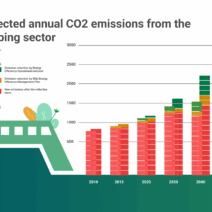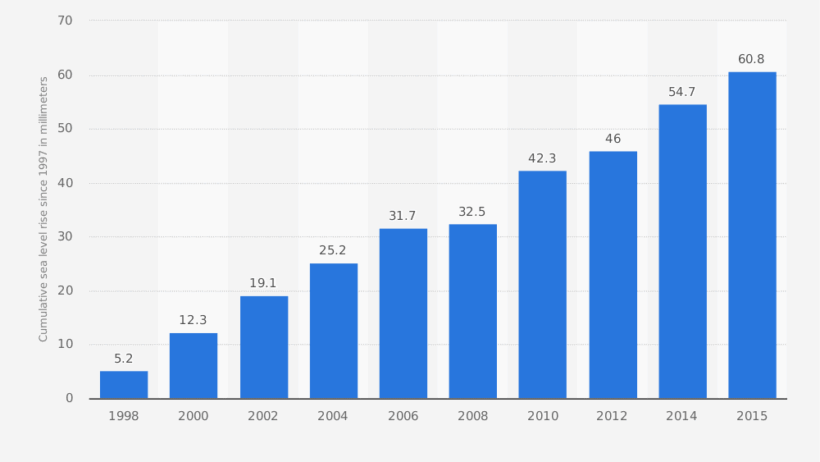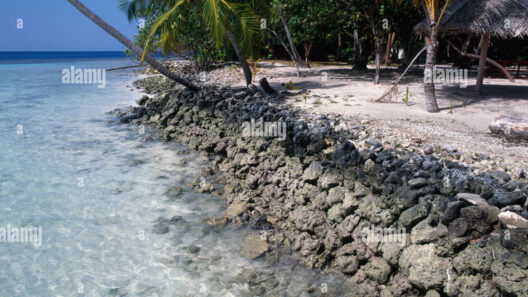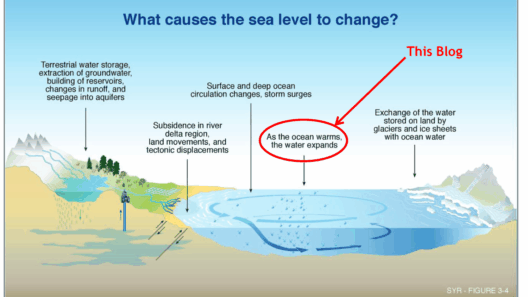The phenomenon of rising sea levels is one of the most profound environmental challenges that our planet faces today. Each year, oceans swell with a relentless and often overlooked fervor, encroaching on coastlines and disrupting ecosystems. Understanding the intricacies of sea level rise is key not only for education but also for the development of effective adaptation strategies. This article delves into the data surrounding the yearly increase in ocean levels, drawing attention to the aesthetic beauty and stark reality of our planet’s changing landscapes.
In exploring the yearly increase in ocean levels, we are confronted with alarming statistics that are as revealing as they are sobering. Over the past century, average sea level has risen approximately eight inches, primarily driven by two factors: thermal expansion due to global warming and the melting of ice sheets and glaciers. The scenario becomes even more pronounced in recent decades. According to observations, the current rate of sea level rise is about 3.3 millimeters per year — a figure that continues to accelerate in correlation with rising global temperatures.
Understanding the temporal evolution of sea levels elucidates two critical aspects of climate change: the immediacy of its impacts and the subsequent long-term consequences that can radically alter geography and human habitation.
When one considers the annual increment in sea levels, it is essential to paint a vivid picture of the implications, assessing how the beauty of coastal regions interplays with rising ocean waters.
Tracking the Intricacies of Sea Level Variability
The dynamic nature of our planet means that sea levels do not rise uniformly; instead, they fluctuate based on various factors, including geological features, ocean currents, and atmospheric conditions. For example, areas affected by significant glacial melting, such as the coastal regions of Greenland and Antarctica, experience much higher rates of rise than the global average. In some locales—where once-bountiful beaches flourished—coastal communities now confront the stark reality of erosion and inundation. The phenomena encapsulated in these localized experiences tell a tale of adaptation and resilience amid changing tides.
In addition to geological variability, climatic events like hurricanes and typhoons can exacerbate sea level rise during specific seasons. The phenomenon known as “storm surge” confronts beleaguered shorelines with rapid, dramatic increases in water levels, further illustrating the precarious balance between nature’s beauty and its potential ferocity. The esthetic charm of seaside vistas risks being overshadowed by the dread of encroaching waters.
The science of measuring sea levels is a meticulous process that employs satellite technology and precise tidal gauges. These instruments capture the intricacies of maritime changes, enhancing our understanding of trends and anomalies. Furthermore, ongoing research—grounded in rigor—seeks to explain the divergence in rate and impact on different regions worldwide.
Melting Ice Sheets: The Elephant in the Room
When examining the contributors to sea level rise, one must highlight the daunting impact of melting ice sheets. The polar regions, once considered robust bulwarks against rising seas, are now seen as harbingers of change. Satellite imagery illustrates vast expanses of ice retreating at unprecedented rates, inflicting profound shifts not only in sea levels but also in global weather patterns. As glaciers disintegrate and recede, the influx of freshwater into oceans contributes to both levels and alterations in salinity and currents. This play of water can disrupt marine ecosystems and lead to unpredictable weather phenomena across continents.
A poignant example of the ever-accelerating pace of melting ice is the Thwaites Glacier in Antarctica, which is losing ice at alarming rates and has been dubbed the “doomsday glacier” due to its potential to raise sea levels by over ten feet if significant melting continues. This specificity of location and impact exemplifies the potential for global repercussions stemming from localized events.
Adapting to Rising Tides: An Aesthetic Dilemma
As sea levels inch upward, communities are compelled to adapt, often redefining the relationship between human habitation and natural landscapes. Infrastructure that once stood resilient against the tides is now being reevaluated and reengineered. Urban planners are devising innovative strategies—such as floating homes that provide not only shelter but also a unique aesthetic appeal, harmoniously blending humanity with oceanic flows. The imagery of such homes, sovereign in their buoyant beauty against the rising waters, elicits a sense of wonder, yet underscores the pressing urgency of adaptation.
Furthermore, reforestation and the restoration of coastal wetlands are being deployed as nature-based solutions, providing natural barriers against flooding while maintaining the visual splendor of coastlines. The juxtaposition of vibrant ecosystems with encroaching sea levels offers an intriguing narrative, one where beauty and threat coexist, compelling societies to reconsider their interaction with the environment.
Conclusion: The Intertwined Future of Oceans and Coasts
The yearly increase in ocean levels is not merely a statistic; it is a paradigm shift that signals an urgent call to action. As we track sea levels, we must acknowledge their profound implications for both human and ecological futures. This multifaceted challenge demands a mosaic of solutions—one that merges sustainability with innovation, artistry with science. The continued study and monitoring of sea levels will be critical as we navigate this brave new world, one where every rising tide is a reminder of nature’s power, beauty, and fragility.








